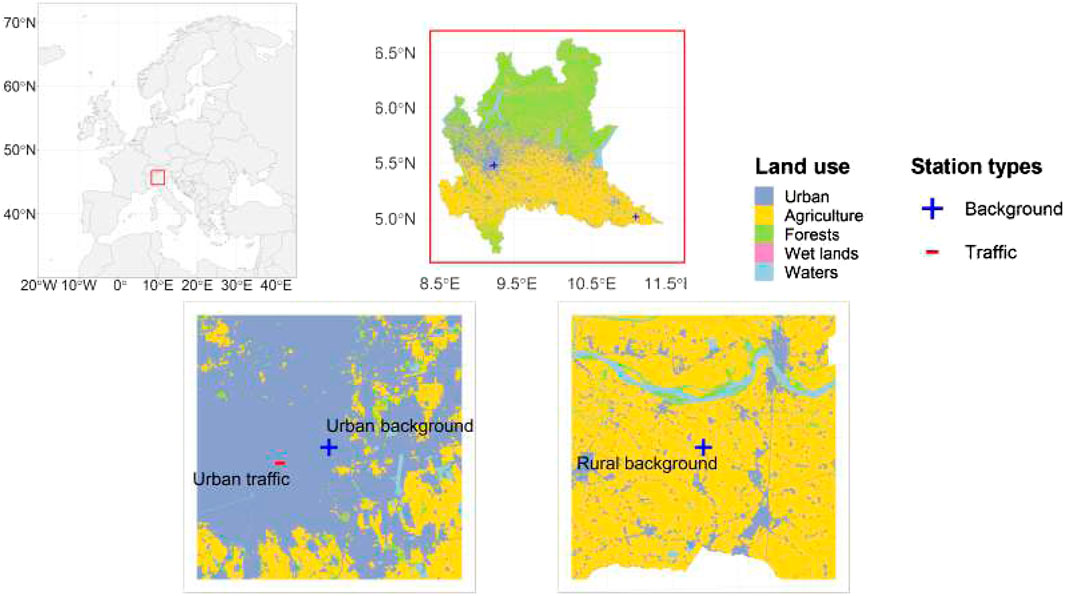
Although emissions from the agricultural sector, particularly animal farming, impact air quality and public health they are often ignored in public policy both at the regional and European levels. A series of new studies led by CMCC, in collaboration with Legambiente Lombardia, shows just how significant the impact of agricultural pollution in the Po Valley, Italy, is. With significant implications for policy choices.
In the wake of the 2020 COVID-19 lockdowns, researchers in northern Italy noticed that notwithstanding the partial suspension of travel and industrial production in the region, the level of particulate matter in the atmosphere remained high.
This is significant as air pollution, especially particulate matter, is one of the planet’s main environmental health concerns and policies that address particulate matter tend to focus on transport and industry, even though there is growing evidence that agriculture plays a significant role.
As part of the INHALE project, in collaboration with the Italian non-profit organization Legambiente Lombardia and Bocconi University, CMCC researchers have conducted a series of studies that seek to assess the extent of human health impacts from agriculture activities in the Po Valley so as to assess the dominant pollution regimes and possible air quality improvements from hypothetical emissions reductions.
In the recent study entitled “The formation of secondary inorganic aerosols: A data-driven investigation of Lombardy’s secondary inorganic aerosol problem”, CMCC researchers drew on the predictive power of machine learning models and exploited the reduction in non-agricultural emissions during the lockdown to investigate the complex relationship between ammonia, nitrogen dioxide, and secondary inorganic aerosol concentrations.
The study concludes that agriculture is the main producer of ammonia emissions in the Po Valley and that it therefore contributes substantially to the formation of secondary particulate matter and the deterioration of air quality. These conclusions indicate that, in order to improve air quality, policies must address the simultaneous reduction of particulate matter precursors: ammonia and nitrogen oxides.

Air quality stations with respect to land use in Lombardy. Land use categories are urban areas, agricultural areas, forests, wetlands, and waters (colored in gray, yellow, green, violet, and light blue, respectively). The blue cross identifies background stations, while the red one identifies traffic stations. Map of Europe with a red rectangle over Lombardy. Source: Renna et al 2024.
“From a scientific perspective, the contribution of agriculture to air pollution in the Po Valley is clear. This study provides evidence that the sector needs to be part of a broader air quality strategy,” says Francesco Granella, postdoctoral researcher at CMCC and lead author of the study.
Further adding to our understanding of the impact of agriculture on air pollution, another new study entitled “Impacts of agriculture on PM10 pollution and human health in the Lombardy region in Italy”, assesses the impact of agriculture on PM10 pollution.
“We were able to show that the spreading of manure in Lombardy contributes to the deterioration of air quality in winter, as ammonia is released into the atmosphere,” says Stefania Renna, visiting researcher at CMCC, PhD student at the Polytechnic University of Milan and leader of the study which also relied on ARPA Lombardia for its data.
“This research sheds light on how to more effectively reduce secondary inorganic PM2.5, unlike the existing literature, it is exclusively based on ground monitored data,” says Lara Aleluia Reis from CMCC.
For more information:
CMCC was leader of both studies and a partner in the INHALE project, funded by Fondazione Cariplo, coordinated by Bocconi University, and implemented together with Legambiente Lombardia.
- Francesco Granella, Stefania Renna, Lara Aleluia Reis; The formation of secondary inorganic aerosols: A data-driven investigation of Lombardy’s secondary inorganic aerosol problem, Atmospheric Environment; Volume 327; 2024; 120480, ISSN 1352-2310; https://doi.org/10.1016/j.atmosenv.2024.120480.
- Renna Stefania, Lunghi Jacopo, Granella Francesco, Malpede Maurizio, Di Simine Damiano; Impacts of agriculture on PM10 pollution and human health in the Lombardy region in Italy; Frontiers in Environmental Science; Volume 12; 2024; https://doi.org/10.3389/fenvs.2024.1369678.


